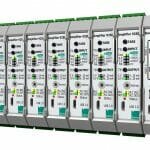By Andy Graham, Solutions Manager, SolutionsPT
The Internet of Things (IoT) refers to the huge and ever-growing network of intelligent devices and computers that are connected and sharing even more huge amounts of data! Microsoft estimated that this year there will be 13 billion connected IoT devices, as you can imagine, the implications of this are vast and far-reaching.
Moving to the Industrial Internet of Things (IIoT), the same general idea of IoT, but specifically to the devices, processes and people associated with industries like manufacturing and infrastructure. IoT is more for improving everyday life (smart homes for example) whereas IIoT devices and services handle critical industrial and plant floor operations and are used to collate valuable data.
Incorporating IIoT into your organisation can create game-changing operational efficiencies.
Using IIoT to your Advantage – Predictive Maintenance to Reduce Downtime
The wider manufacturing industry is finding effective uses for IIoT as part of Industry 4.0. One of the most effective is predictive maintenance. IIoT enables easier, non-intrusive implementation of the right sensors so manufacturers can take advantage of these latest technologies. This is becoming increasingly apparent in legacy equipment that remains prevalent in the industry.
It’s an urban myth that enterprises need to wait until a machine needs to be repaired to carry out vital fixes or replace it entirely. Nowadays using predictive analytics, plant managers can identify a machine’s future problems and plan/act accordingly.
And, this goes beyond identifying an old piece of kit that’s probably close to the end of its lifecycle. It’s using machine-learning analysis and multiple sensor points to collate the necessary data and predict failure months in advance. This reduces unplanned downtime, lowers the costs of unnecessary maintenance and keeps things running along smoothly.
The same concept applies to operational efficiency and real-time business decisions. Imagine how effective, for example, notifying the right people when a certain line is consuming more energy or raw goods than usual. Issues would be rectified quickly and easily before they escalate into unsuspecting, spiralling costs or affect the quality of the finished products.
Intelligent Edge to Drive Growth
The term Intelligent Edge basically refers to the connected systems and devices that are collecting data, locally at the edge. Domestically, it could be your house, but in this case, we’re looking at plants and control rooms.
The information collected via sensors and data points is processed and analysed by systems to provide deeper insight into your processes. These insights are then presented in context so you can make intelligent decisions which can drive growth. Information is no longer a clever analysis of predictions and past data, computing power located at the edge of the network offers key insight in real-time, giving manufacturers the information to implement advanced maintenance strategies.
Keeping Up With the Competition
The sensors and IIoT devices mentioned earlier are rapidly becoming more popular in the progressive factory and are subsequently falling in cost. The very nature of IIoT devices also reduces implementation costs in comparison to standard PLCs and devices.
So, manufacturers have access to these sensors and are already putting them to good use. The industry is more connected than ever thanks to the IIoT and advanced data processing.
The IT systems that are most often used for data-centric computing are converging with their OT counterparts that are used to control and monitor processes and devices. This results in more data and deeper insight for those on the plant-floor and all the way to the boardroom. Utilising the IIoT effectively, ensuring the continued convergence of IT and OT, leads to smarter factories, operating more efficiently than ever before.





